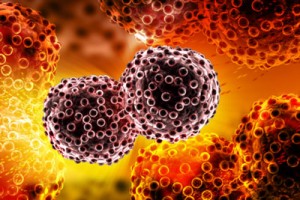Atezolizumab shrank tumours in people with NSCLC in PII study
Posted: 17 August 2015 |
In Roche’s large pivotal Phase II study, BIRCH, atezolizumab met its primary endpoint and shrank tumours in people with locally advanced or metastatic NSCLC…


In Roche’s large pivotal Phase II study, BIRCH, the investigational cancer immunotherapy atezolizumab met its primary endpoint and shrank tumours in people with locally advanced or metastatic non-small cell lung cancer (NSCLC) whose disease expressed PD-L1 (Programmed Death Ligand-1).


Atezolizumab is designed to target PD-L1 expressed on tumour cells and tumour-infiltrating immune cells, preventing it from binding to PD-1 and B7.1 on the surface of T cells. The BIRCH study showed the amount of PD-L1 expressed by a person’s cancer correlated with their response to the medicine. Adverse events were consistent with what has been previously observed for atezolizumab.
Roche has seven Phase III studies evaluating atezolizumab as a potential treatment for people with lung cancer
“We are encouraged by the number of people who responded to atezolizumab and maintained their response during the study, which is particularly meaningful for people who had received several prior treatments,” said Sandra Horning, M.D., Chief Medical Officer and head of Global Product Development. “We plan to present results at an upcoming medical meeting and will discuss these data as well as results from our other lung cancer studies with health authorities to bring this medicine to patients as quickly as possible.’’
Earlier this year, the FDA granted atezolizumab a Breakthrough Therapy Designation for the treatment of people whose NSCLC expresses PD-L1 and who progressed during or after standard treatments (e.g. platinum-based chemotherapy and appropriate targeted therapy for EGFR mutation-positive or ALK-positive disease). This designation is designed to expedite the development and review of medicines intended to treat serious diseases. Roche has seven Phase III studies evaluating atezolizumab alone or in combination with other medicines as a potential new treatment for people with early and advanced stages of lung cancer.









